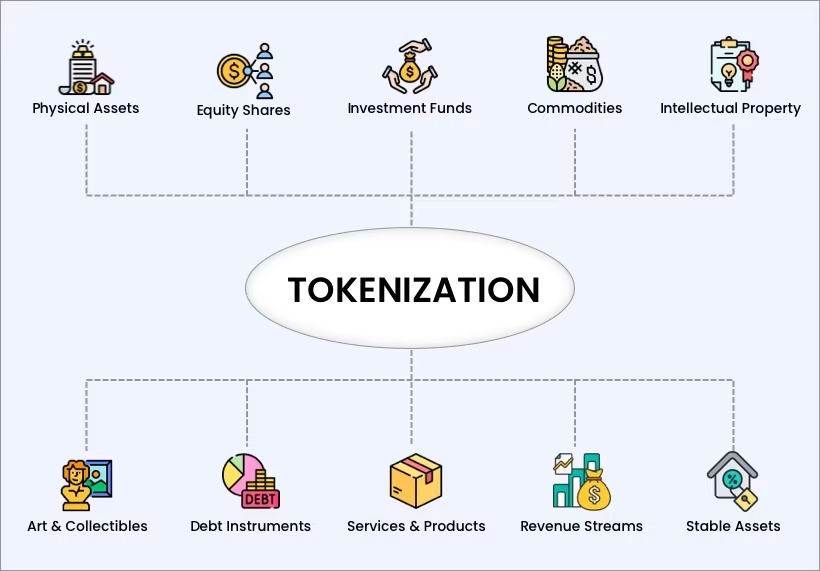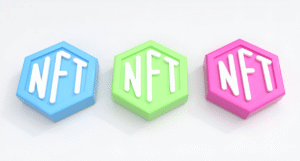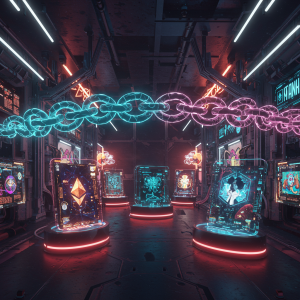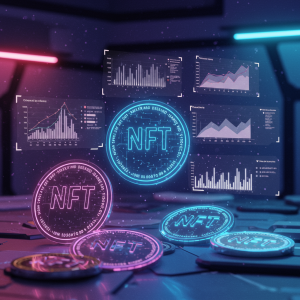Tokenized IP: How NFTs are Revolutionizing Intellectual Property Licensing and Royalties

The traditional intellectual property landscape has remained largely unchanged for decades. Artists, musicians, writers, and other creative professionals have long faced uphill battles in protecting their work, securing fair compensation, and tracking how their creations are used. But the emergence of blockchain technology and NFTs has sparked a fundamental transformation.
The Broken IP System
For generations, creators have struggled with an intellectual property system filled with intermediaries. Music artists typically receive just 12% of the revenue their work generates. Authors often earn mere pennies per book sold. Photographers and visual artists lose control of their work as it circulates online without attribution or compensation.
These inefficiencies stem from outdated systems built before the digital age. Traditional IP licensing agreements are cumbersome paper contracts, difficult to track and enforce. Royalty payments flow through multiple middlemen, each taking their cut before reaching the creator.
This system has created a disconnect between creative value and creator compensation that tokenized IP aims to solve.
Understanding Tokenized IP
At its core, tokenized intellectual property uses blockchain technology to create verifiable, immutable records of ownership and usage rights for creative works. Unlike conventional copyright registrations, these tokens can contain embedded smart contracts that automatically execute licensing terms and royalty payments.
NFTs (Non-Fungible Tokens) serve as the technological foundation for this revolution. Each token represents a unique digital certificate of ownership linked to a specific creative work. These tokens can be programmed with sophisticated rules governing how the associated IP can be used, by whom, and under what compensation models.
As we’ve seen at Outbound Marketo, this technology creates unprecedented opportunities for both creators and businesses seeking to license intellectual property.
Smart Contracts: The Engine of Tokenized IP
Traditional licensing requires expensive legal intermediaries and offers limited flexibility. Smart contracts—self-executing agreements with terms directly encoded into blockchain—change this completely.
These digital agreements automatically monitor usage, calculate royalties, and distribute payments in real-time. A musician can program their music NFT to collect 2% each time their track is used in a commercial, with payments split instantly among collaborators according to predetermined percentages.
Most importantly, these contracts operate with minimal friction. No invoices, no payment delays, no disputes over usage terms. Everything happens programmatically, dramatically reducing administrative overhead while increasing transparency.
Transforming Creator Economics
The economic implications for creators are profound. Tokenized IP enables perpetual royalties previously impossible in traditional markets. An artist who sells a digital artwork as an NFT can earn a percentage every time that NFT changes hands in the secondary market—forever.
This creates long-term income streams that appreciate alongside a creator’s reputation. Early career artists benefit from ongoing compensation as their work grows in value, rather than missing out on the appreciation of their earliest pieces.
Additionally, creators gain unprecedented insight into how their work is used and valued in the marketplace. Real-time analytics show who’s licensing their content, how it’s being implemented, and which pieces generate the most economic value.
Real-World Applications Transforming Industries
The music industry has been among the first to embrace tokenized IP. Artists like 3LAU and Steve Aoki have generated millions through NFT releases that include commercial rights, creating new relationships between fans, collectors, and commercial usage.
In publishing, authors are tokenizing manuscript rights, allowing readers to invest in books before publication and share in future revenues. This creates community-funded publishing models that bypass traditional gatekeepers while aligning reader and author incentives.
Film and television projects increasingly use tokenized IP structures to raise production funds while preserving creator ownership. Contributors receive tokens representing fractional ownership in the intellectual property, with automated royalties as the content generates revenue across global distribution channels.
The Technology Behind the Revolution
Several key technological innovations make tokenized IP possible:
On-chain metadata provides immutable records of creation date, ownership history, and authentic provenance. This solves the attribution problem that has plagued digital creators since the internet’s inception.
Fractional ownership protocols allow multiple parties to hold percentages of valuable IP assets. This democratizes access to premium intellectual property investments while creating liquidity in previously illiquid markets.
Cross-chain bridges enable tokenized IP to function across multiple blockchain ecosystems. A music NFT minted on Ethereum can generate licensing revenue from applications built on Solana or other compatible networks.
Metadata standards like ERC-1155 and ERC-721 provide consistent frameworks for expressing complex rights and usage parameters. These protocols ensure that tokenized IP works consistently across various marketplaces and applications.
Benefits for Businesses and Licensees
For companies seeking to license intellectual property, tokenized systems offer remarkable advantages. Businesses can discover available IP through decentralized marketplaces that aggregate offerings based on usage rights, price, and category.
Licensing becomes as simple as purchasing or renting the appropriate token. Smart contracts automatically grant the necessary permissions while handling compliance and payment without traditional paperwork.
Usage tracking becomes transparent for all parties. Both creator and licensee can verify exactly how intellectual property has been used, eliminating disputes and creating accountability that benefits legitimate business users.
Challenges in the Tokenized IP Landscape
Despite its promise, tokenized IP faces significant hurdles. Legal frameworks in many jurisdictions haven’t kept pace with blockchain innovation. Questions remain about how tokenized rights interact with traditional copyright law and international IP protection.
Technical barriers still limit mainstream adoption. Gas fees, wallet security concerns, and the complexity of blockchain interactions create friction that prevents many creators from participating in this revolution.
Standardization remains a work in progress. Without universal standards for expressing rights and permissions in smart contracts, compatibility issues can create confusion about what rights specific tokens actually convey.
Future Developments on the Horizon
As these challenges resolve, several exciting developments are emerging. Hybrid licensing models blend traditional legal frameworks with blockchain enforcement, creating systems that satisfy both conventional business needs and cutting-edge efficiency.
Identity solutions are evolving to connect on-chain and off-chain reputation. This allows tokenized IP systems to account for a creator’s existing body of work and reputation when determining compensation and rights.
Generative content systems powered by AI are being integrated with tokenized IP frameworks. This allows for automated creation of derivative works with proper attribution and compensation flowing back to original creators.
Industry-specific platforms are emerging with features tailored to particular creative fields. Music, visual art, literature, and film each have unique licensing requirements that specialized platforms can address more effectively than general-purpose solutions.
Getting Started with Tokenized IP
For creators interested in exploring tokenized IP, several paths exist. Begin by researching platforms that specialize in your creative field. Each ecosystem offers different advantages in terms of audience, fees, and licensing structures.
Consider starting with limited rights releases to test the waters. Many creators tokenize specific usage rights while retaining others, creating a hybrid approach that minimizes risk while exploring new models.
Join communities focused on creator economics and tokenized IP. The landscape evolves rapidly, and connecting with other innovators provides valuable insights and potential collaboration opportunities.
Experiment with programmable royalty structures that weren’t possible in traditional systems. The flexibility of smart contracts allows for creative approaches to value sharing that may reveal unexpected opportunities.
Conclusion
Tokenized intellectual property represents the most significant evolution in creative rights management in generations. By embedding licensing terms, usage rights, and compensation models directly into blockchain tokens, we’re witnessing the emergence of more transparent, efficient, and creator-centric economic systems.
While challenges remain in legal recognition and technical implementation, the trajectory is clear. The future of intellectual property lies in programmable, self-executing rights management that eliminates intermediaries and reconnects creative value with creator compensation.
For forward-thinking creators and businesses, tokenized IP offers not just incremental improvement but a fundamental reimagining of how we value and exchange intellectual property in the digital age.








